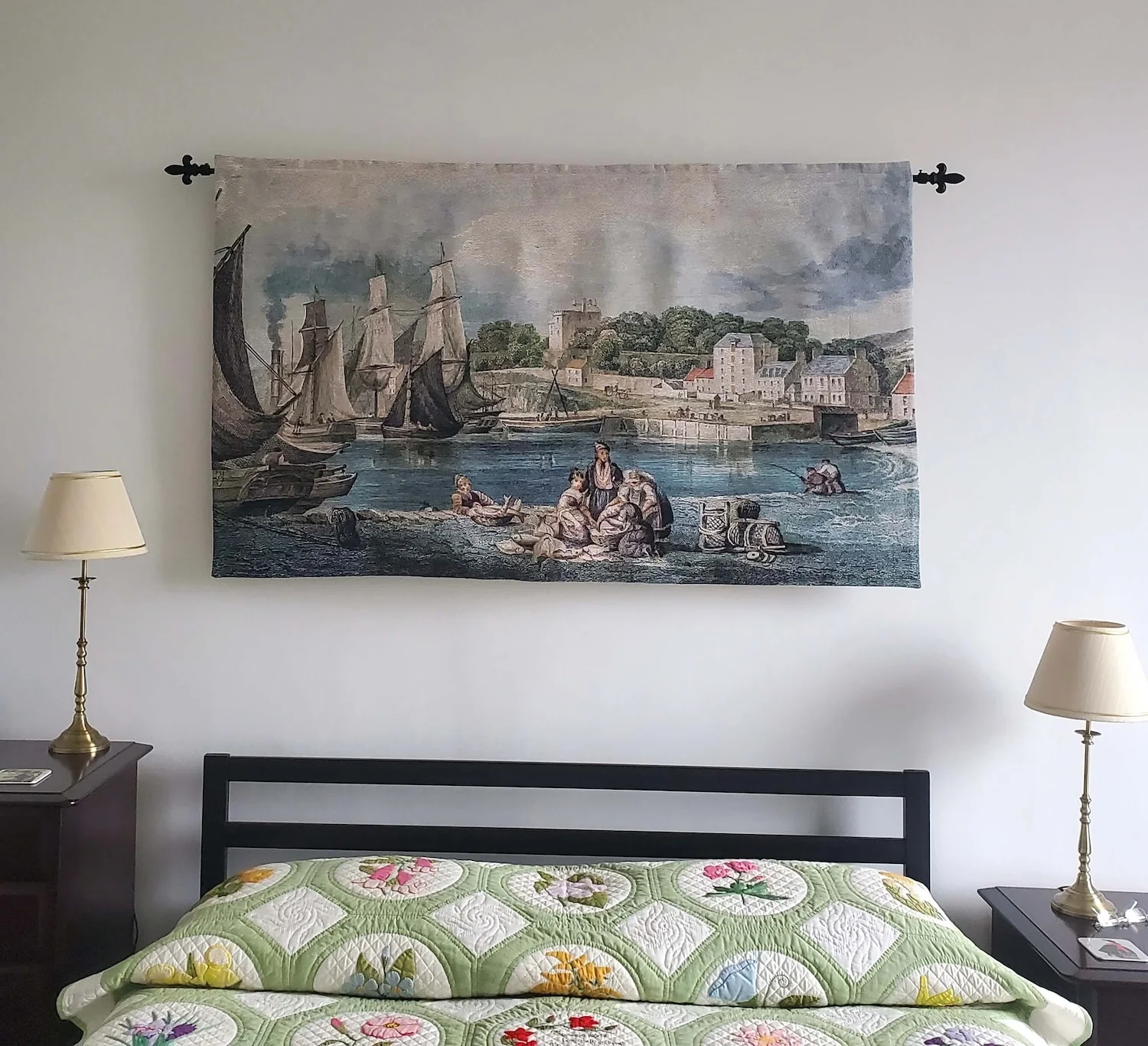Tapestries have long held a significant place in European culture, valued not only as beautiful works of art but also as symbols of power, wealth, and storytelling. From medieval courts to Renaissance palaces, these intricate textiles adorned the walls of castles and churches, illustrating important events, religious scenes, and mythological stories. The cultural significance of tapestries in Europe is deeply rooted in their ability to merge artistry with function, offering a visual representation of history while providing practical uses.
A Symbol of Wealth and Power
In medieval and Renaissance Europe, owning large, intricately woven tapestries was a symbol of immense wealth and social status. Tapestries were expensive and labor-intensive to create, often commissioned by royalty or the nobility. These grand pieces were displayed in castles and estates, serving as a statement of power. The size, detail, and materials used in a tapestry reflected the owner’s prestige, with gold and silver threads often woven into the designs for added opulence.
Storytelling Through Tapestries
One of the most important roles that tapestries played in European culture was as a medium for storytelling. Before widespread literacy, tapestries were used to convey narratives—religious stories, historical battles, and mythological tales—through detailed imagery. The famous Bayeux Tapestry, for example, recounts the events leading up to the Norman conquest of England in 1066. This embroidered cloth is a prime example of how tapestries were used to chronicle significant historical events.
Religious tapestries, depicting scenes from the Bible or the lives of saints, were common in churches and monasteries. They provided a visual teaching tool for those who could not read, offering spiritual guidance through art. These pieces were not only decorative but also carried deep religious and moral meanings.

The Practical Use of Tapestries
While tapestries were admired for their beauty, they also served practical purposes. In the drafty castles and churches of medieval Europe, tapestries acted as insulation, keeping rooms warmer by covering cold stone walls. They could also be rolled up and transported easily, making them practical for nobility who moved between estates or for displaying at court ceremonies and diplomatic events.
Renaissance and Baroque Eras: A Tapestry Golden Age
During the Renaissance, tapestries reached a golden age in Europe, particularly in countries like Belgium, France, and Italy. Workshops in Brussels and Arras became renowned for their exceptional craftsmanship. These tapestries often depicted elaborate scenes of courtly life, biblical stories, or allegorical themes, reflecting the humanistic and artistic ideals of the time.
In the Baroque era, tapestries became even more intricate and colorful, with designs influenced by famous artists such as Raphael and Rubens. The intricate weaving techniques allowed for stunning detail, making tapestries appear more like paintings than textiles. The imagery was often grand and dramatic, befitting the Baroque style, which focused on movement, emotion, and the spectacular.
Tapestry as a Status Symbol
Beyond their aesthetic and practical uses, tapestries were also used as diplomatic gifts between European courts. Kings and queens would commission tapestries as a gesture of goodwill or to cement alliances. The gifting of a tapestry was a way to demonstrate wealth and cultural sophistication, as well as to strengthen political ties.
Tapestry Symbolism
Throughout European history, tapestries were imbued with symbolism. The imagery depicted in a tapestry often held deep meaning. For instance, hunting scenes were common in medieval tapestries and symbolized nobility and the pursuit of virtue. Allegorical tapestries, which became popular in the Renaissance, depicted virtues, vices, and the human condition, often with complex symbolic references understood by the elite of the time.
Many tapestries also featured animals, flowers, and landscapes with symbolic meanings. For example, the unicorn was a symbol of purity and Christ, while the lion represented strength and royalty. These symbolic elements added layers of meaning to the visual narratives woven into the fabric.
The Decline and Revival of Tapestry Making
By the 18th century, the rise of painted canvases and other decorative arts began to overshadow tapestries. However, the craft experienced a revival in the 19th and 20th centuries, with a renewed interest in traditional techniques and historical designs. Tapestries from the medieval and Renaissance periods were restored and collected as valuable works of art.
In the modern era, artists such as Jean Lurçat and Pablo Picasso contributed to the resurgence of tapestry as an art form, experimenting with abstract designs and contemporary themes. While no longer a symbol of aristocratic power, tapestries remain cherished cultural artifacts and are celebrated in museums and collections around the world.
Conclusion
Tapestries in Europe have transcended their decorative origins to become rich cultural symbols of storytelling, power, and artistry. From the grandeur of medieval courts to the religious narratives of cathedrals, tapestries have played a crucial role in shaping European art and history. Today, they continue to captivate audiences, serving as a testament to the creativity and craftsmanship of the past. Through their woven threads, tapestries preserve stories, values, and traditions that have endured for centuries.











